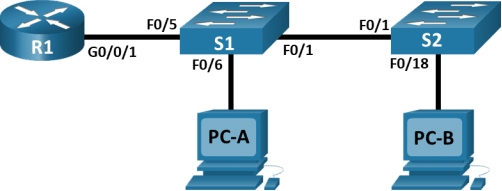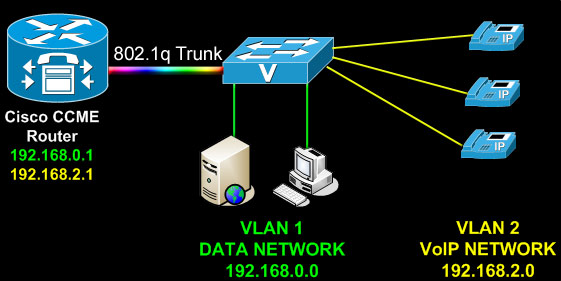
A newly bought switch will have dynamic desirable configured on every interfaces, the purpose for this is well-intended by cisco however it is a bad feature as far as security is concerned.Īssigned the same native vlan for all trunk ports.


#Router on a stick vlan password
Configure vtp domain name, password and put to server mode, so that when a new switch (especially used switch) is deployed into this network vlan information will not be wiped out by the “new” switch. It is best not to leave vtp domain as null even if it is only one switch.
#Router on a stick vlan manual
Interface IP-Address OK? Method Status ProtocolįastEthernet0/0 172.16.1.1 YES manual up upįastEthernet0/0.10 172.16.1.33 YES manual up upįastEthernet0/0.20 172.16.1.65 YES manual up upįastEthernet0/0.30 172.16.1.97 YES manual up upįastEthernet0/0.100 unassigned YES manual up upįastEthernet0/1 unassigned YES manual administratively down down What is router on a stick used for Router-on-a-stick (ROAS) is a feature that allows us to route packets to subnets associated with VLANs connected to a router 802.1Q trunk. This scenario is called router on a stick (ROAS) and allows all VLANs to communicate through a single physical interface. Router On a Stick: The Router’s interface is divided into sub-interfaces, which acts as a default gateway to their respective VLANs. Vlan itself is a subnet, the switch interfaces can be configured into logical subnets, information within the same vlan can be forwarded however if one vlan needs to send frames across other vlan a layer3 device is needed. Configure router on a stick To enable inter-VLAN communication, you can divide a single physical interface on a router into logical interfaces that will be configured as trunk interfaces. Shutdown unused ports and assigned them to native vlan.įor vlan to work no router or multi-layer switch is needed, the router is there for intervlan routing. Interfaces that have not been assigned to vlan will belong to vlan 1. It is recommended to define a native vlan to another unused(unassigned vlan) to prevent vlan hopping attack. Setting Port 1 to Vlan Mode "enabled" and VLAN Header to "add if missing" makes Port 1 a trunk port.ģ.Vlan 1 is default native vlan if native vlan has not been explicitly defined. The VLAN page determines how the switch strips the Vlan tags with specific Vlan ID's from the packets as they exit these ports. Begin by clicking on the VLAN tab and make the following changes, assuming the trunk port will be Port1 (the port that is connected to the router).Ģ. You must be accessing the switch via ehter2 through ether5 since you are about to turn ether1 into a trunk port and you will lose communication with the switch at that point on ether1.ġ. NOTE: Before starting configuration, it is assumed you have 192.168.88.2 bound to your laptop and the switch is at the default Ip of 192.168.88.1. In this example we need two ports for devices on Vlan 30 on Ports 3 & 5 and one port for device on Vlan 40 on Port 4 and one port for a device on Vlan 20 on port 2. Selection of the Vlan ID and the assignment to the ports is your choice, decide what Vlan ID's you will use and where you will assign them. It is a method of inter-VLAN (virtual local area networks) routing where one router is connected to a switch via a single cable. NOTE: Once you set port 1 to "trunk" mode, you will not longer be able to communicate with the switch unless you create a Vlan1 on your router. In computing, a router on a stick, also known as a one-armed router, is a router that has a single physical or logical connection to a network. The way the OS is built, there is no need for a default gateway or a subnet mask.

This behavior is a bit different than Cisco IOS that responds to untagged traffic via an IP bound to Vlan 1. Note that the switch will respond to http requests to its IP address on all ports. In this example we are using Vlan Id's 1, 20, 30 and 40. The default user name is admin with no password.Īll settings may be left at the defaults with the exception of a few. To log into the RB250GS switch, simply web browse to 192.168.88.1 from a computer on the same physical network segment with an IP on the same subnet, 192.168.88.0/24. The purpose of this article is to show the steps required to setup the MikroTik RB250GS switch as a trunked switch in the router-on-a-stick configuration. In practice, this same configuration can be used between two switches or two routers. In this example, a router with a single Ethernet interface is trunked to a MikroTik switch.


 0 kommentar(er)
0 kommentar(er)
